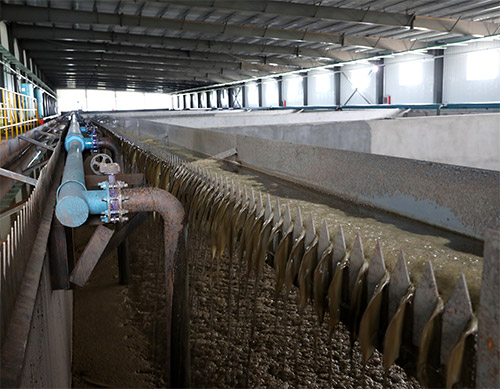The aquaculture industry faces the critical challenge of managing wastewater rich in organic matter, suspended solids, ammonia, and phosphorus. Effective treatment is not just a regulatory requirement but essential for sustainable and environmentally responsible operations. As a trusted supplier of water treatment chemicals, we provide targeted solutions using Polyaluminium Chloride (PAC) and Polyacrylamide (PAM) to address these challenges efficiently.

Understanding Aquaculture Wastewater
Wastewater from fish and shrimp farms is characterized by:
High levels of suspended solids (fish waste, uneaten feed)
Elevated nutrients (Nitrogen & Phosphorus) leading to eutrophication
Organic matter that depletes oxygen in water bodies
Potential pathogens
An effective treatment process is crucial to remove these contaminants, allowing for water reuse or safe discharge.
Our Core Products: PAC & PAM for Aquaculture
A two-step chemical process involving coagulation and flocculation is highly effective. This is where our key products, PAC and PAM, play a vital role.
Polyaluminium Chloride (PAC) – The High-Performance Coagulant
As a superior inorganic coagulant, PAC works by neutralizing the electrical charges of fine suspended particles and colloids in the wastewater. This charge neutralization causes the tiny particles to destabilize and begin clumping together into micro-flocs.
Key Advantage for Aquaculture: PAC works effectively across a wide pH range and generates less sludge compared to traditional coagulants like alum. It is particularly efficient in removing phosphorus and clarifying the water.
Polyacrylamide (PAM) – The Powerful Flocculant
Following coagulation, Polyacrylamide (PAM), an organic polymer flocculant, is added. PAM acts as a binding agent, creating bridges between the micro-flocs formed by the PAC coagulant. This process, called flocculation, forms large, dense, and fast-settling flocs.
Key Advantage for Aquaculture: The use of PAM significantly accelerates the settling speed of solids, resulting in clearer supernatant water and a more compact sludge volume. We offer both anionic and cationic PAM grades to match the specific characteristics of your wastewater.
The Synergistic Treatment Process
The combination of PAC and PAM creates a powerful and cost-effective treatment system:
Step 1: Coagulation: PAC is rapidly mixed into the wastewater, destabilizing fine particles.
Step 2: Flocculation: PAM is gently mixed, allowing the formation of large, settleable flocs.
Step 3: Sedimentation: The heavy flocs settle at the bottom, leaving clear water on top that can be further treated or safely discharged/reused.
Step 4: Sludge Handling: The settled sludge is dewatered, reducing disposal costs.
Why Choose Our Aquaculture Treatment Chemicals?
Proven Expertise: We understand the unique demands of the aquaculture sector.
Product Range: We supply a full range of coagulants and flocculants, including various grades of Polyacrylamide (PAM) and Polyaluminium Chloride (PAC).
Technical Support: Our team provides expert guidance on product selection and dosing optimization for your specific farm conditions.
Quality & Reliability: All our chemicals are produced to the highest quality standards, ensuring consistent and effective performance.
Optimize Your Farm’s Water Management Today
Leverage our expertise and high-quality water treatment chemicals to build a cleaner, more productive, and sustainable aquaculture operation.
Contact Henan Seccotoday for a free consultation and to find the right flocculant and coagulant solution for your needs.